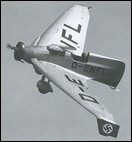

Messages containing data that is not time critical, like the vehicle road speed, are given lower priority values. Higher priority values are typically given to high-speed control messages, for example, the torque control message from the transmission to the engine. The first three bits of the identifier are used for controlling a message’s priority during the arbitration process.

Table 1: Structure of a 29-bit identifier. The 29-bit identifier used in J1939 is structured in the following way. The RTR bit (remote request bit) is always set to zero in J1939. The SOF, SRR, and IDE bits are defined by the CAN standard and will be ignored here. The identifier is used slightly different in a message with a destination address (”PDU 1”) compared to a message intended for broadcast (”PDU 2”). J1939 uses the 29-bit identifier defined within the CAN 2.0B protocol shown in Figure 1. For example, a request for a specific torque value from the engine instead of a specific torque value from the brake controller. When a message must be directed to a particular device, a specific destination address can be included within the message identifier.
#Dm1 vehicle software#
This also allows future software revisions to easily accommodate new devices (address assignments). This permits any device to use the data without requiring additional request messages. This means that the data is transmitted on the network without a specific destination. Most messages defined by the J1939 standard are intended to be broadcast.


 0 kommentar(er)
0 kommentar(er)
